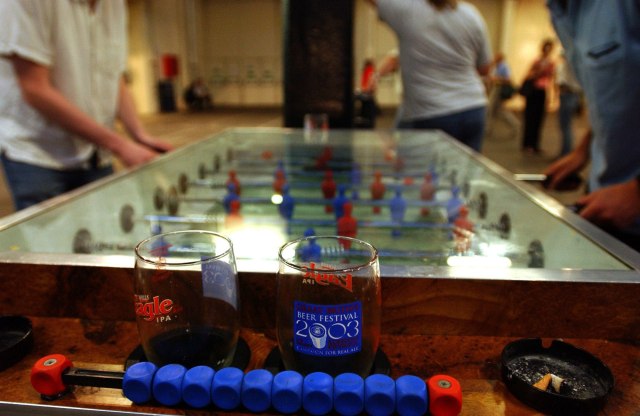Credit: Bruno Vincent/Getty Images

Working men’s clubs seem old fashioned now, easy to dismiss as relics of a bygone era. But these working-class institutions were once at the heart of local communities – places to celebrate, to mourn, to share in collective experiences. Today’s working-class communities are poorer for their decline.
In the 1970s, when the clubs were in their heyday, the Club and Institute Union (CIU) oversaw a network of over 4,000 of them, with around four million members, and many more on waiting lists to join.
As one former member of Phil’s club in Leicester told me: “You had to queue to get in at opening time at holidays and weekends. Families liked to sit together in their favourite seats and the clubs were packed.” This was typical of clubs across the country.
The clubs engendered a strong sense of ownership and affection. From finding the initial funds, premises and materials, even pitching in with the building work, founder members felt it was their own. Describing his local, the Tile Hill Social club in Coventry, Chris said: “We loved our club, we gave money each week to get it built. Everyone chipped in.”
This model of collective ownership and self-management developed from the mid-19thcentury when clubs started to appear as alternatives to profit-taking pubs. Many were set-up by workers in the same industry – there were gas fitters, miners’, engineers’, railwaymen’s and shipbuilders’ clubs. Men clocked off at work and then ‘clocked on’ at the club. Mutual support and self-reliance were built into their very fabric.
Other clubs drew members from the neighbourhood, from the new council estates being built around industrial cities in the inter-war years and then post-1945. The spacious suburban estates had fresh air and decent housing but often lacked community centres. “There was nothing to do round here when we moved in, late 1947, so some of us got together to set-up a club,” said one old-timer. This became the Canley Social Club, which grew from a temporary wooden hut into an attractive venue with concert room, lounge, games room, bowling green and football pitch. Similar motivation was seen right across the country.
Generations of working-class children enjoyed Christmas parties, summer holiday activities, trips to the seaside, pantomimes and concerts. Adults would play snooker, cribbage, darts and dominoes often in inter-club leagues. Younger members learned about skill and teamwork, informally mentored by their elders. Older habitués found companionship and an escape from loneliness after their children had moved away. They found, at their club, a camaraderie that had been lacking.
Lewis Jowers still visits the club he was taken to as a child, the No.1 Amalgamated in Middlesbrough: “It goes back generations for my family,” he told me. “It’s a place to socialise, meet up with friends and workmates. They are a big part of the culture, they are a huge part of people’s lives and mean a great deal to people.”
But as long-established industries started to disappear, and lay-offs hit, people had less money to spend and many clubs couldn’t afford to keep going – cutting back on space and activities. The practice of fathers buying their sons club membership when they came of age faded along with the industries the sons would have followed their fathers into. A spiral of decline began.
The 2007 smoking ban, didn’t help. Nor did higher taxation on alcohol, cheap supermarket drink offers, and a growing legislative burden for those who ran clubs which all added to their slow death.
And as the working men’s clubs have disappeared, so too has a key part of working-class culture.
Older people, whose daily club visits helped stave off social isolation, talk of “solitary confinement”. Families no longer have an affordable venue to meet and socialise and share in each others’ lives. The collective history of what used to be part of everyday working-class life has started to fade away with fewer places where people can recall and celebrate it.
Yet there is hope – some clubs are bucking the trend, and while many are struggling to keep their doors open, around 1,300 CIU clubs are still open for business and they are adapting to survive. Because people still want ‘offline’ social time, to meet with others face-to-face and to feel part of something bigger than themselves. They still seek that sense of collective belonging. In fact, the need for working men’s clubs might just be greater today than ever before.









Join the discussion
Join like minded readers that support our journalism by becoming a paid subscriber
To join the discussion in the comments, become a paid subscriber.
Join like minded readers that support our journalism, read unlimited articles and enjoy other subscriber-only benefits.
Subscribe